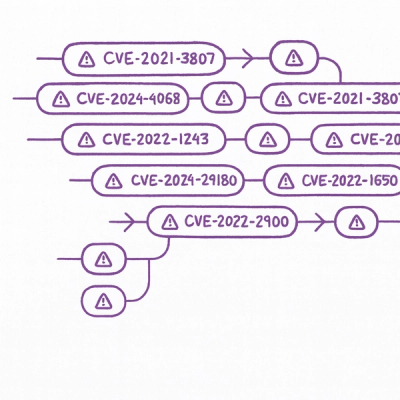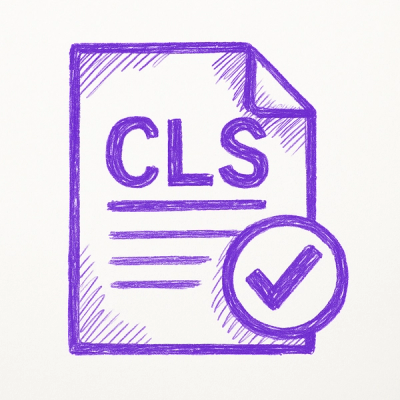
Security News
Astral Launches pyx: A Python-Native Package Registry
Astral unveils pyx, a Python-native package registry in beta, designed to speed installs, enhance security, and integrate deeply with uv.
RMDS is a library for performing multidimensional scaling.
Wikipedia describes multidimensional scaling (MDS) as
[...] a set of related statistical techniques often used in information visualization for exploring similarities or dissimilarities in data.
In essence, multidimensional scaling takes a matrix of similarities or dissimilarities between pairwise observations as input and outputs a matrix of observations in Cartesian coordinates that preserve the similarities/dissimilarities given. The dimensionality of the output is a parameter to the algorithm.
RMDS implements metric multidimensional scaling in which dissimilarities are assumed to be distances. The result of this multidimensional scaling variant are coordinates in the Euclidean space that explain the given distances. In general, the embedding found is not unique. Any rotation or translation applied to found embedding does not change the pairwise distances.
RMDS makes heavy use of linear algebra routines, but does not ship with linear algebra algorithms. Instead, RMDS has a non-intrusive adapter architecture to connect existing linear algebra packages to RMDS. For how-to details on providing new adapters for RMDS see {MDS::MatrixInterface}.
Note that the performance of most RMDS algorithms is dominated by the algorithms and performance of the linear algebra backend used.
Currently the following linear algebra backends are supported
The following successfully calculates a two dimensional Cartesian embedding for a given distance matrix.
require 'mds'
require 'mds/interfaces/gsl_interface'
# Tell RMDS the linear algebra backend to be used.
MDS::Backend.interface = MDS::GSLInterface
# The squared Euclidean distance matrix.
d2 = MDS::Matrix.create_rows(
[0.0, 10.0, 2.0],
[10.0, 0.0, 20.0],
[2.0, 20.0, 0.0]
)
# Find a Cartesian embedding in two dimensions
# that approximates the distances in two dimensions.
x = MDS::Metric.projectd(d2, 2)
The result, x, of the above example is shown in the following image. In red the coordinates that yield the input matrix d2. In green, the resulting embedding x which preserves distances between individual observations and is unique up to rigid transformations.

The following example works on a distance matrix which originates from air distances between european cities. It does not require a concrete linear algebra backend, but rather chooses an available one. The results are diagrammed graphically using Gnuplot and compared to the result from a mapping tool.
require 'mds'
require 'gnuplot' # gem install gnuplot
# Load backend
MDS::Backend.try_require
MDS::Backend.active = MDS::Backend.first
puts "Using backend #{MDS::Backend.active}"
# Load distance matrix from file, contains city names in first column
path = File.join(File.dirname(__FILE__), 'european_city_distances.csv')
cities = []
rows = MDS::IO::read_csv(path, ';') do |entry|
begin
f = Float(entry)
f * f # we use squared distances
rescue ArgumentError
cities << entry
nil
end
end
# Invoke MDS
d2 = MDS::Matrix.create_rows(*rows)
# Find a projection that preserves 90 percent of the variance of the distances.
proj = MDS::Metric.projectk(d2, 0.9)
# Plot results
Gnuplot.open do |gp|
Gnuplot::Plot.new( gp ) do |plot|
# Uncomment the following lines to write result to image.
# plot.term 'png size'
# plot.output 'visualization.png'
plot.title "Air Distances between European Cities"
plot.xrange "[-2000:2000]"
plot.yrange "[-1500:1200]"
plot.data << Gnuplot::DataSet.new(proj.columns) do |ds|
ds.with = "points"
ds.notitle
end
cities.each_with_index do |name, i|
plot.label "'#{name}' at #{proj[i,0] + 30}, #{proj[i,1] + 30}"
end
end
end
The following image show the result of the above script. A map is shown in a separate image for comparison.
Keep in mind that


The following tables show the results of benchmarking different linear algebra packages against three test scenarios. They were generated by invoking 'rake test:bench:all' on a QuadCore 2.4 GHz machine, running Ubuntu 10.4 inside a virtual machine.
Note that the each test involves creation of the observations randomly, calculating the squared euclidean distance matrix of observations and invoking MDS. The first two steps are not listed explicitely since they only take roughly 5 percent of the total runtime.
Benchmarking RMDS for 10 observations in 2-dimensional space
user system total real
stdlib: 3.710000 1.220000 4.930000 ( 5.195076)
gsl: 0.000000 0.000000 0.000000 ( 0.067544)
linalg: 0.000000 0.000000 0.000000 ( 0.005462)
Benchmarking RMDS for 100 observations in 5-dimensional space
user system total real
stdlib: inf inf inf ( inf)
gsl: 0.030000 0.010000 0.040000 ( 0.043115)
linalg: 0.020000 0.010000 0.030000 ( 0.043157)
Benchmarking RMDS for 1000 observations in 10-dimensional space
user system total real
stdlib: inf inf inf ( inf)
gsl: 34.070000 1.390000 35.460000 ( 39.013276)
linalg: 12.750000 0.340000 13.090000 ( 13.645427)
Because of documented limitations of {MDS::StdlibInterface} timings for this interface are shown only for the smallest of the three scenarios. Neither GSL nor LAPACK/BLAS was re-compiled for optimal performance.
RMDS itself does not have any dependencies except Ruby. Each matrix interface is likley to depend on one or more external projects, such as bindings and native libraries.
RMDS is tested against Ruby 1.8.7 and Ruby 1.9.1.
An up-to-date documentation of the current master branch can be found here.
RMDS is copyright 2010 Christoph Heindl. It is free software, and may be redistributed under the terms specified in the {file:LICENSE.md} file.
FAQs
Unknown package
We found that rmds demonstrated a not healthy version release cadence and project activity because the last version was released a year ago. It has 1 open source maintainer collaborating on the project.
Did you know?

Socket for GitHub automatically highlights issues in each pull request and monitors the health of all your open source dependencies. Discover the contents of your packages and block harmful activity before you install or update your dependencies.

Security News
Astral unveils pyx, a Python-native package registry in beta, designed to speed installs, enhance security, and integrate deeply with uv.

Security News
The Latio podcast explores how static and runtime reachability help teams prioritize exploitable vulnerabilities and streamline AppSec workflows.

Security News
The latest Opengrep releases add Apex scanning, precision rule tuning, and performance gains for open source static code analysis.